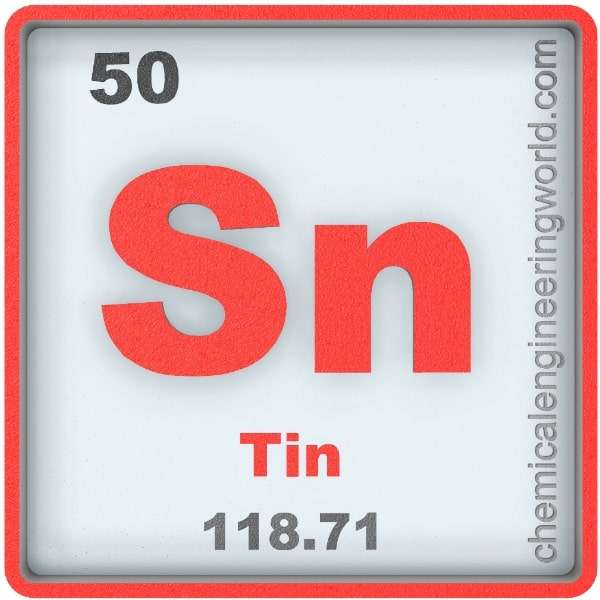Tin Element Properties and Information

Tin Element Properties and Information
Tin is fiftieth element on the periodic table. Elements are arranged in the periodic table on the basis of the atomic number. Atomic number is the number of protons in the nucleus of the atom. Tin has an atomic number of 50. It is located in the Group 14 and Period 5 of the periodic table of elements. It is denoted by Sn. The name comes from Anglo-Saxon word ‘Tin’.
Tin is one of the metals which were regularly used in ancient times. It is said to be discovered around 2100 B.C. It is said to be used all around the world. Relics have especially been found in Egypt, China, and Macchu Picchu. Main use of tin in ancient time was to combine it with copper to produce bronze. Bronze didn’t melt at lower temperature.
Tin is mainly found in ‘tin-belt’ stretching through China, Thailand, and Indonesia. The principal ore of tin is cassiterite.
Physical Properties
- Tin is a soft, ductile, malleable, crystalline silvery metal.
- The atomic mass of tin is 118.69
- The melting point of tin is 232°C
- The boiling point of tin is 2270°C
- The density of tin is 5770 in S.I. units at 20°C
- Tin is crystalline in nature. Thus it has different forms, and its different forms have different uses.
- Tin was one of the first superconductors to be studied. Tin becomes a super conductor below 3.72 K.
- Tin has 10 stable isotopes.
Chemical Properties
- If tin is exposed to air then a passivation layer forms on it.
- Tin resists corrosion in water.
- Tin can get attacked by acids or alkalis.
- Tin acts as a catalyst when oxygen is in the solution and helps to accelerate the chemical reaction.
- Tin is capable of reacting and forming a variety of organic & inorganic compounds and also hydrides.
Methods of Production
Reduction: Tin is produced by carbo-thermic reduction of oxide ore with carbon or coke.
Relevance in Chemical and Related Industries
- Specialized alloys: Tin forms a variety of useful alloys when combined with other metals. It is most commonly combined with copper. Some of the tin-copper alloys are bronze, pewter, and bell-metal.
- Tin-chemicals: The organo-tin compounds are the most common tin-chemicals produced worldwide. Major application of organo-tin compounds is to produce stabilisers for PVC. Also owing to their toxic nature, the organo-tin compounds are used in fungicides, pesticides, as wood-presarvatives etc.
Relevance in Other Industries
- Li-ion batteries: Tin forms several inter-metallic phases with lithium metal. Making it attractive for battery applications. Tin is used in negative electrode in batteries.
- Solders: Largest use of tin is as production of solder. About half of the tin produced worldwide goes into production solder. They are used for joining electrical circuits or pipes.
Health Effects on Exposure
Organic-Tin compounds: The major use of tin is in its organic form. They are generally highly toxic in nature. Acutely they can cause eye-irritation, headache, stomachache, dizziness, sweating, and breathlessness. Long-term effects include liver damage, depression, chromosomal damage, malfunctioning of immune system, and brain damage.
Effects on Surroundings
- Organic-Tin compounds: if released, these compounds persist in the environment for long periods of time. They are not fairly biodegradable. Once they enter water system, they are capable of causing great harm to aquatic-water system.
References:
https://en.m.wikipedia.org/wiki/Tin
































